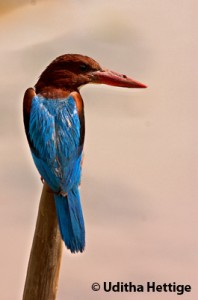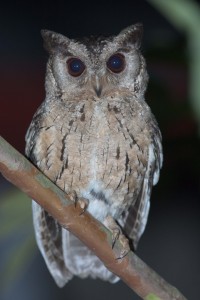A wetland awakening, and home garden dawn chorus 
Today, International Dawn Chorus Day, I planned to visit a wetland to experience the dawn chorus there, while my daughter and wife agreed listen to the dawn chorus at our home garden. I reached Talangama tank by 5.10 am while it was still dark about 20min before to the dawn of the day. When I arrived there a male Oriental Magpie-Robin had already started to sing its beautiful songs from a tree along the tank bund. Soon an Asian Koel started to call and then a White-bellied Drongo began its repertoire, while shrub frogs vocalizing from plants in the area nearby. Those birds started to sing well before dawn as this is their breeding season.
Before the dawn waterbirds that vocalized was only a pair of White-breasted Waterhen while the magpie-robin was still singing its powerful and melodious song. It was also lightning and thundering that time.
Dawn was around 6.30am when other birds at the wetland began to fill the chorus with their sounds. White-breasted Kingfisher, White-breasted Waterhens and an egret were amongst others in the dawn chorus.
Soon after the dawn the chorus became significantly rich with bird sounds. More individuals of most of the birds mentioned earlier contributed to the dawn chorus. There was also a Purple Heron calling while it was leaving the night roost (heard between 33 sec. and 36 sec. in the sound track below).
At dawn egrets and herons were roosting at their regular night roost began to flying out while Asian Openbills and Black-headed Ibises were still remaining at the roost. Mainly the Black-crowned night Herons were heard while they were leaving the roost.
Common Kingfisher, a pair of Little Grebes and Red-wattled Lapwing heard at other places.
There were other birds, such as Greater Coucals, Green-imperial pigeons, Spotted Doves, White-browed Bulbuls, Red-vented Bulbuls, Common Mynahs, Black-headed Orioles, etc. from trees on bank of the tank or from surrounding home gardens participated in the morning bird chorus. Heavy rain began by 6.30 am following the lightning and thundering that continued from predawn.
As it expects from having an International Dawn Chorus Day it indicates profusely to the listeners the presence of a rich birdlife at wetlands and adjoining habitats in suburban areas, and also it signifies the importance of preserving these habitats.
Deepal Warakagoda, 3rd May 2015
Dawn chorus at home garden
In the end of April my father told me that the International dawn chorus day is on 3rd of May. He told that he is going to Talangama Tank to listen to the dawn chorus there on that day and asked whether my mother and me can do the same at our home garden. So, today my mother and me went in to the garden at 5.20 a.m. equipped with an audio recorder which my father set up for me yesterday. At first there was only insects and shrub frogs calling and it was still dark. Dawn was around 6.30 a.m. and the first one to call was the Asian Koel.
Then the other birds began to call, Red-vented Bulbul and Yellow-billed Babbler joined the koel.
The Oriental White-eye joined the chorus with singing its rather soft, undulating and melodious song. And the Red-vented Bulbul continued to sing with more of its different types of songs.
And there were two Red-vented Bulbuls singing from their own territories while the other birds continue their chorus. The finest songbird in our home gardens the Oriental Magpie-Robin participated only with a single ‘peee..’ note in the background.
As the dawn chorus continues more birds joined in. Such as Common Tailorbird, Purple-rumped Sunbird, Black-headed Oriole, Oriental Magpie-Robin, Greater Coucal, and the Rose-ringed Parakeet flew over.
Two Common Tailorbirds joined in the chorus with their very loud calls. The Brown-headed Barbet came in to the chorus with its fast, loud song while the parakeets flew over and thunder rumbled in the sky.
While I was recording my mother wrote down the birds which called. At about 6.20 a.m. we had to stop our listening session, because the rain started to pour down. The dawn chorus day is meant to listen and enjoy the chorus of birds in the morning, so actually my mother and me enjoyed it very much today. Also it was an opportunity to learn about the bird calls further.
Himesha Warakagoda, 3rd May 2015

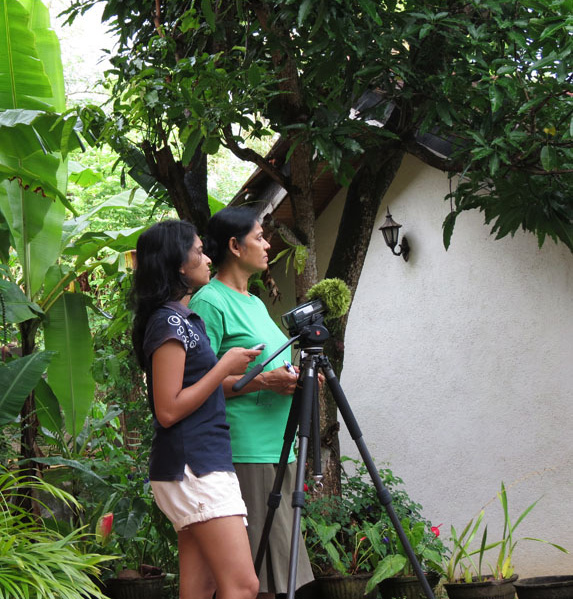
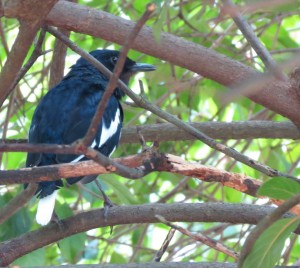
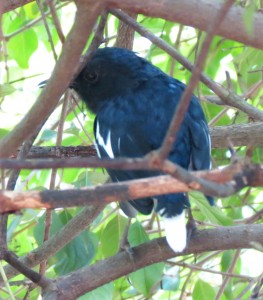
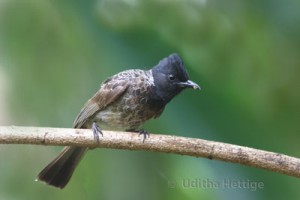
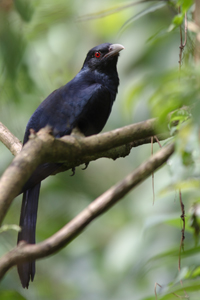 Asian Koel, male. Photo by Uditha Hettige.
Asian Koel, male. Photo by Uditha Hettige.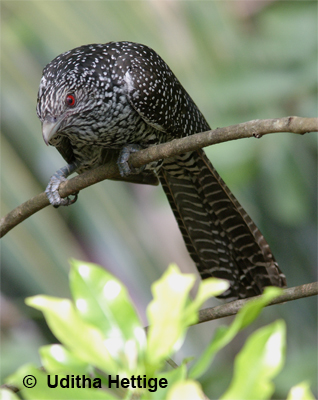 Asian Koel, female. Photo by Uditha Hettige.
Asian Koel, female. Photo by Uditha Hettige.